Cruising around the Galapagos Archipelago
Text by DOLORES BARCIELA
Photos courtesy of M/Y WILDAID'S PASSION


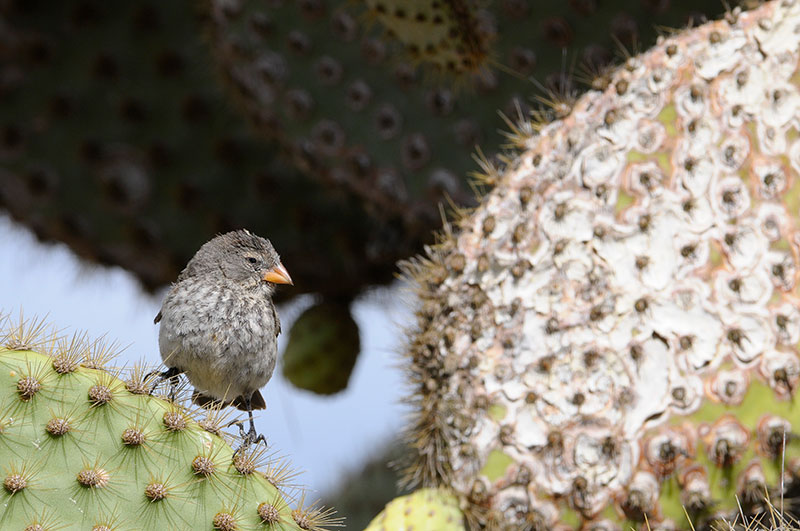
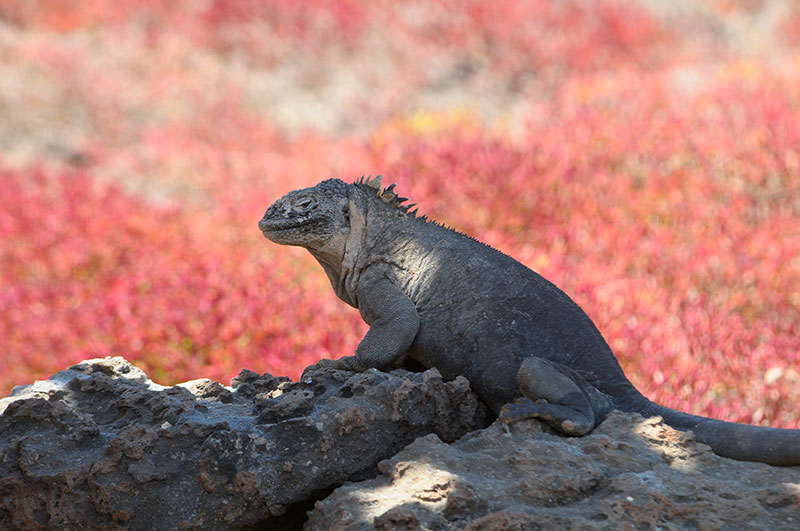
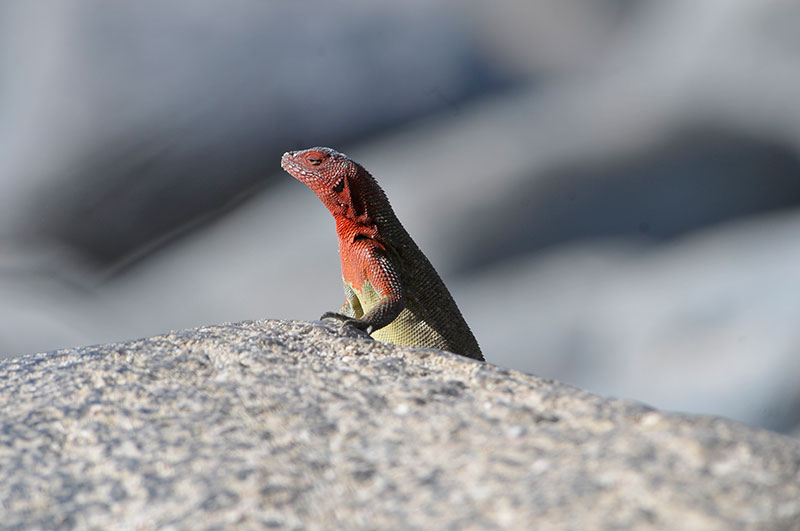

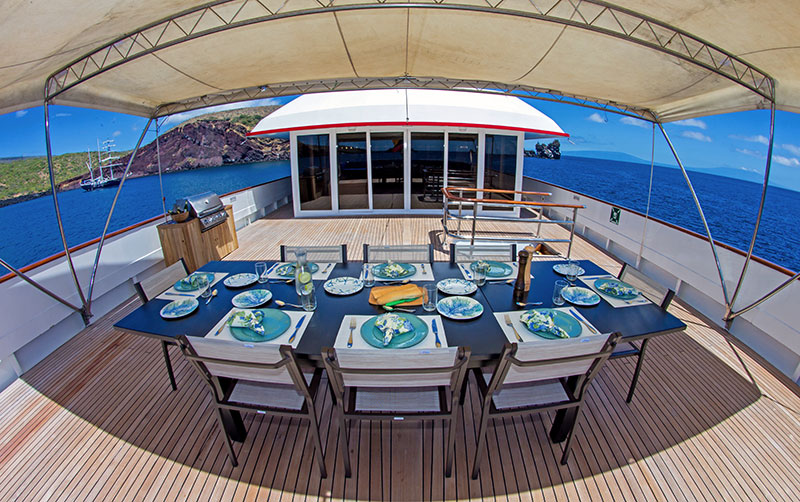
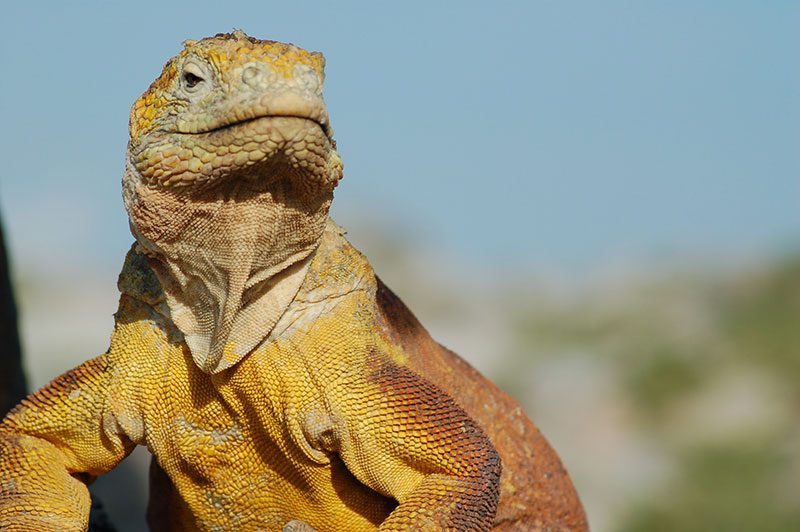
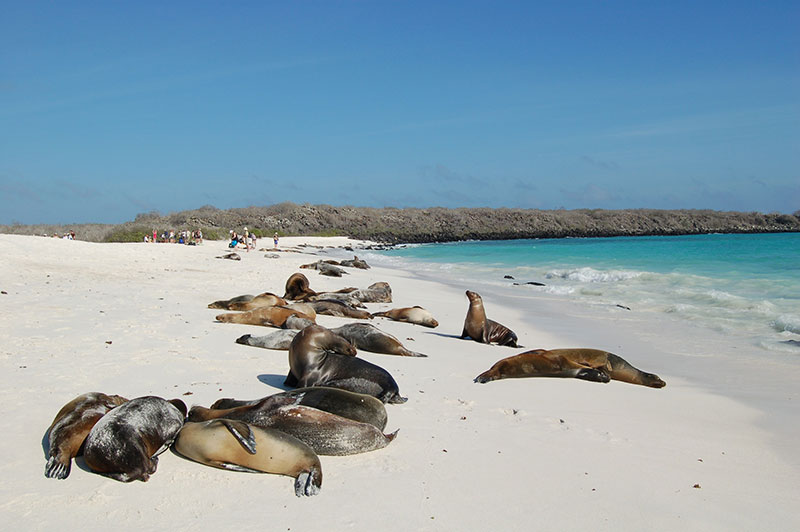
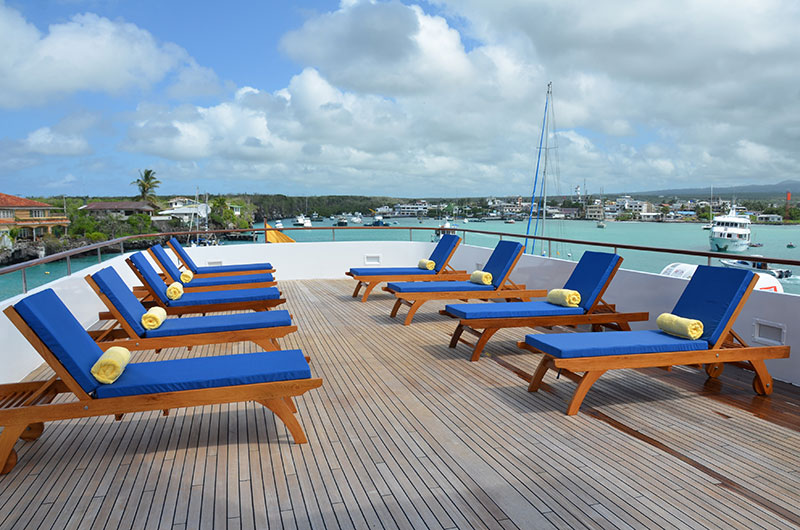
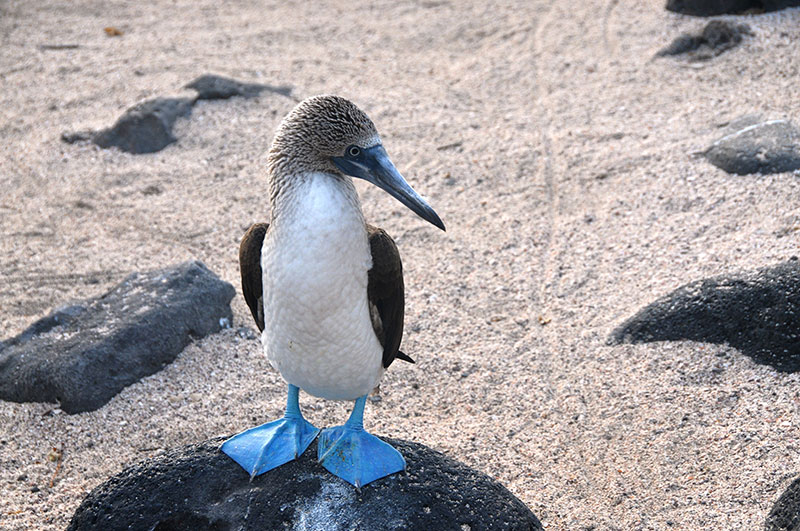

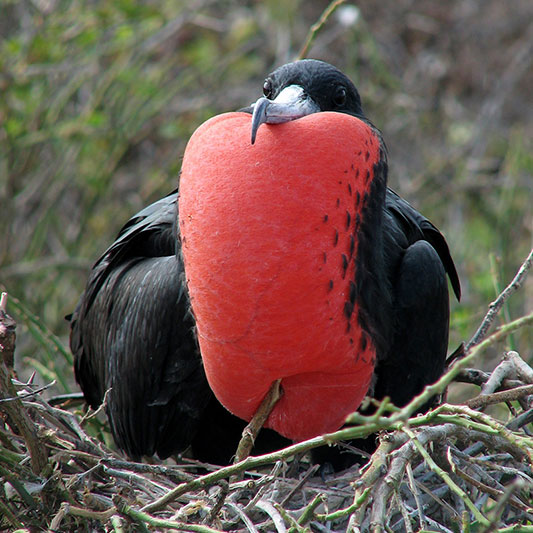




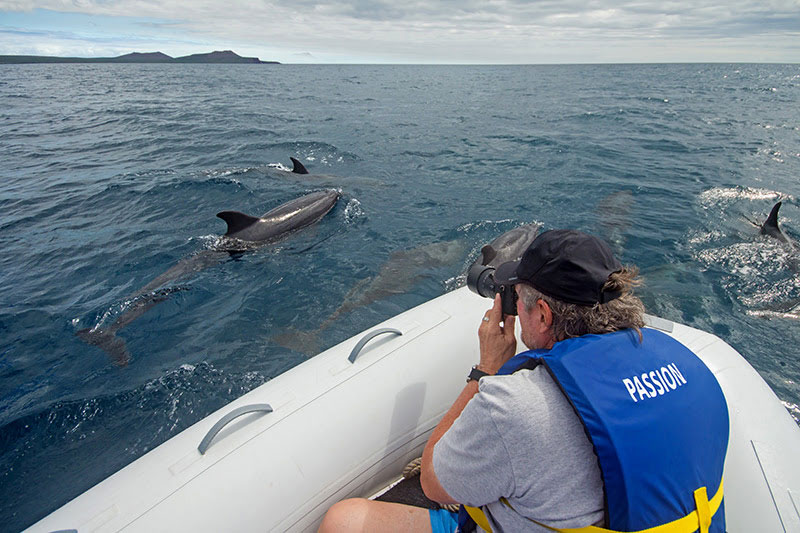

We are snorkeling along the rugged coast of Isla Santiago, in the protected waters facing a tiny island aptly named Sombrero Chino or Chinese hat because it resembles a Chinese rice farmer’s hat. As I’m done watching colorful fish schools swim by, I remove my goggles and continue drifting with the current while observing how red crabs climb the black volcanic rocks along the coast. Suddenly, I see my first Galapagos penguin swimming nearby. Less than 2 feet long, they’re the only penguins in the world that live near the equator. This one is very cute and playful and I enjoy swimming close to him while, some 15 feet away, the rest of the group continues snorkeling. Chema signals me the number 5 with his hand and I think, “Cool, they must be watching 5 other penguins dive underneath them”. He later tells me he was referring to 5 mid-sized Galapagos sharks close to the bottom, just a few feet away from me. The group is pleased to have seen them, but I’m quite relieved to hear this after the dive ends.
We all climb into our dinghy and get back aboard M/Y Wild Aid’s Passion, where we are greeted with warm chocolate by cheerful crewmember Roberto, and are provided towels by other friendly crewmembers, to use after we remove our wetsuits. Roberto announces we now have snacks awaiting us on the top deck and Fernando, the marine biologist leading our expedition, lets us know he’ll be giving a lecture on Darwin after dinner in the main salon.
We’re now relaxing on deck, enjoying warm empanadas while watching a beautiful sunset over Isla Santiago. It can’t get much better than this. Seagulls and petrels fly by. Their sound is the only one we hear, along with the soft caress of the water against our hull. We’re alone in this virgin corner of the world that, I imagine, looks as pure and authentic as it was hundreds of years ago when Europeans first sighted this archipelago.
It’s everyone’s responsibility now to help maintain it as pristine as it is, and protect its vast endemic flora and fauna. The Galapagos National Park and the Ecuadorian Government are doing a great job, and so are a few conservation organizations and luxury travel companies like Wild Aid and Angermeyer Cruises/Andando Tours. It’s thanks to them I’m here enjoying this pristine paradise, for which I’m truly thankful. Wild Aid’s program, in the Galapagos, encompasses certain activities to protect its many diverse marine species and habitat like stopping illegal fishing in the Galapagos Marine Reserve and preventing the introduction of invasive species. Angermeyer Cruises/Andando Tours is a high-end tourism operation that understands conservation is good for business, simultaneously maintaining high standards and environmental consciousness.
The M/Y WildAid’s Passion is the largest charter yacht in the Galapagos. At 159′ in length and with four decks, the yacht boasts generous space for up to 14 passengers. There are ample interior and exterior social areas, a panoramic sky lounge with bar and sliding glass doors, separate dining room and wonderfully spacious decks with more than 200 square meters of fine teak decking and a further secluded sun deck with lounge chairs and Jacuzzi. There are four spacious staterooms, each with private bathroom and tub, and two suites (Master and VIP) with two bathrooms each. All cabins are air conditioned. With a service ratio of one crew member per guest, WildAid’s Passion ensures service second to none, while the galley produces gourmet cuisine of international standards. Breakfast, lunch and dinner are often served al fresco in the exterior dining area, allowing guests to enjoy the amazing views and stunning sunsets.
Galapagos. The name alone resonates on so many levels. It’s surely a destination on any naturalist’s bucket list, and a place where basic evolutionary principles can be observed first hand. The archipelago is located some 600 nm off the coast of Ecuador, formed from the emergent tips of huge submarine volcanoes. Its nutrient-rich waters support the concentration and reproduction of migratory marine species ranging from humpback whales and sea turtles to giant manta rays and hammerhead sharks. The islands offer an eclectic mix of species that coupled with high levels of endemism make them very special. Here we may see penguins living side by side with sea lions and iguanas, prehistoric giant tortoises, the only nocturnal seagull, the only true marine lizard and the only flightless cormorant in the world.
The islands are a rich mix of active volcanoes, stunning beaches and abundant, tame wildlife that’s not afraid of humans. I found it a unique experience to be able to closely watch mother sea lions breastfeeding their newborn babies. Some of them even approached us with curiosity. It was a lovely experience to also swim close to sea turtles, colorful fish and penguins. Galapagos is an isolated charming corner of the world well worth discovering.